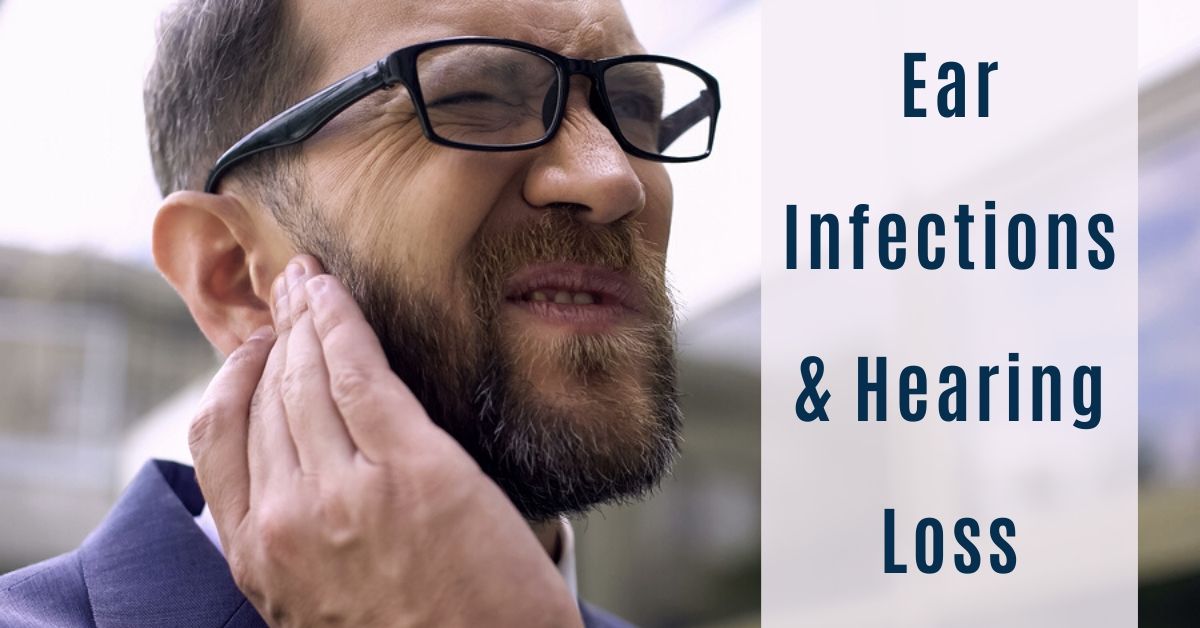There are many causes of hearing damage including advanced age, head trauma and exposure to excessive noise. These aforementioned causes are most often caused by damage to the tiny hair follicles in the inner ear or nerves, which transmit signal to the brain to process. This is the most common type of hearing loss classified as sensorineural hearing loss, which affects the auditory nerve. A sensorineural hearing loss cannot be reversed, only treated with amplification, which hearing aids can provide. When someone develops an ear infection they can also be at risk for hearing loss but this is classified as a conductive hearing loss. A conductive hearing loss manifests itself in a number of ways including injury or a blockage in the middle or outer ear. The good news is that a lot of cases of conductive hearing loss can be reversed.
How ear infections develop
When people develop ear infection it can cause a build up of fluid in the middle ear. Often this can start with the simple common cold, which causes mucus and flem to build up in the Eustachian tube. The Eustachian tube connects the middle ear to the nasopharynx, which consists of the upper throat and nasal passages. This controls the pressure within the middle ear, making it equal with the air pressure outside the body. When mucus and flem get stuck in the Eustachian tube an ear infection can develop easily. This is even more prevalent in children under five years old because, the Eustachian tubes, which drain fluid out of the ear, tend to be smaller and almost level to the ground. As people grow older and larger their middle ear also expands, making ear infections less common.
Hearing loss is a type of conductive hearing loss
If you have an ear infection that is causing hearing loss, this is classified as a conductive hearing loss. This is because the build up of fluid creates a blockage to the middle ear rather than damage to the auditory nerve as sensorineural hearing loss does. Other common causes of conductive hearing loss include any obstruction that prevents sound from passing through the middle ear. This may manifest as a buildup of wax, fluid in the middle ear, or a hole in the eardrum.
Ear infection hearing loss is often temporary
This hearing loss caused by ear infections usually will resolve itself as the ear infection subsides and fluid is able to drain out of the middle ear. Often ear infections can clear up on their own, especially when the patient gets lots of rest, boosts their immune system with vitamin C and zinc and stays hydrated. If an ear infection does not clear up on it’s own then usually your doctor will prescribe antibiotics to help subside the painful effects of ear infections. This usually will clear up an ear infection in just a couple days. If the pain from an ear infection subsides before you have finished your does of antibiotics it is important that you finish the prescription to make sure the infection has completely left your ears.
More treatment options
If you find yourself having ear infections often then your doctor may want to insert a tube in your ear drum to aid in the draining of fluid from the middle ear. A history of ear infections may cause what is known as tympanosclerosis, which is the thickening or scarring of the tympanic membrane. It is essential to eliminate the buildup of fluid as, if ignored, can cause the eardrum to rupture. This can cause serious hearing damage and severe hearing loss. If there is serious damage to your ears after untreated or reoccurring ear infections, then it may be time to explore your options for hearing aids.
How hearing aids help
Hearing aids amplify the sounds that are picked in your ears. This can compensate for any hearing loss that you have sustained whether it be conductive or sensorineural. If you do have a hearing loss it is best not to ignore it, as untreated hearing loss can lead to extreme trouble communicating, depression, anxiety and social isolation. Don’t let your hearing loss get to this point. If you suspect you may have a hearing loss schedule an appointment for a hearing test today.

